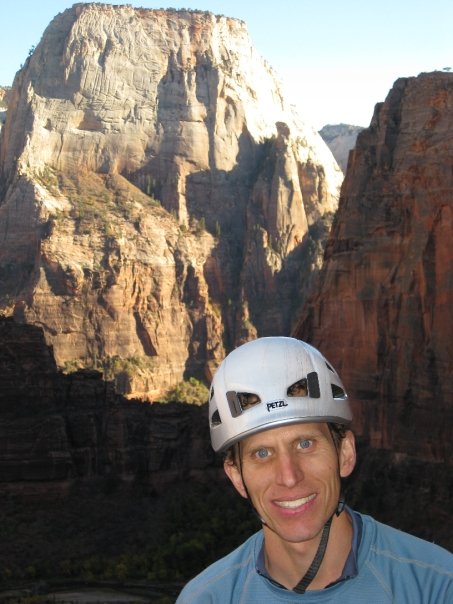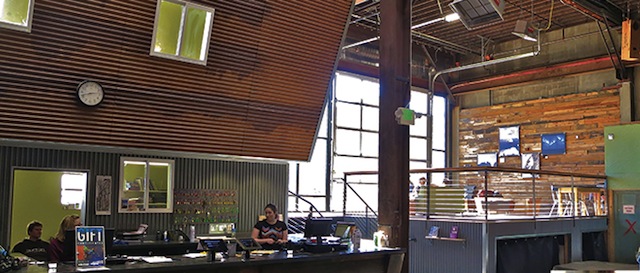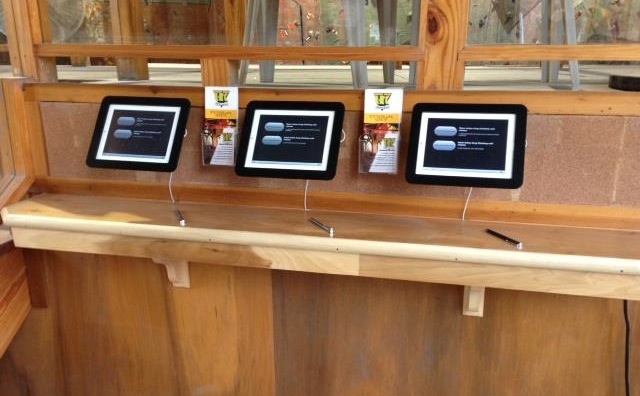
Back in 2007, when Andy Laakmann was spending an enormous amount of time writing code for his new software program, he was not thinking about a business start-up. Even though he had co-founded a highly successful tech company in the nineties (an early photo sharing service that was later sold to a large technology company), at the time he was only trying to solve a problem for his own business, the Enclosure Climbing Center in Jackson Hole, Wyoming.
“It was absolutely not intended to be a business, that was a serendipitous thing that happened,” said Laakmann in a phone interview.
Enclosure had been using health club management software to run its operations, but it wasn’t working well. The software was complex and had many features that weren’t relevant to a climbing gym. It took nearly a week to train staff on the software, and they would still make mistakes when entering new memberships. Costly mistakes, like accidentally giving a year-long membership instead of a one month membership. “Thousands of dollars were being wasted each month on staff training, data entry mistakes, and poor work flow. This was all a direct result of running software not designed specifically for the unique needs of a climbing gym,” said Laakmann.
Drawing on his 20 years of software development experience, Laakmann decided to build his own management software, and Rock Gym Pro was born. After using the software successfully at Enclosure, in the fall of 2008 Laakmann took the unique step of offering the software to other climbing gyms, for free.
One of his early promotions for the product on a RockClimbing.com forum cheerfully claimed: “The product was built for and is used by a busy commercial climbing gym, and is now being released as a free application for the benefit of other gyms.” RGP was offered under the GNU General Public License, which allows anyone to copy and distribute verbatim copies of the software.
A BUSINESS IS BORN
The software was quickly adopted by other climbing gyms, and within a year 40 facilities in six countries were using RGP to run their businesses. Around that time Laakmann added a Premium Support plan that provided RGP users with personalized technical support for a low monthly fee. He also removed the GPL license. Laakmann described the changes he made during this time as essential to keeping the software going.
“This is software that runs businesses that process millions of dollars, and at the end of the day, I am responsible. This thing processes money. It just has to be right, and I have to control it,” Laakman said. “Its a full time job, I have to make money on it or I’m not going to stay the course. Other people have tried making software for the climbing world and they’ve all faded away because they weren’t making a return for the time invested.”
BY THE NUMBERS
Today there are 335 business using the software to run their operations. “There are almost no climbing gyms left in North America not running it. I bet it’s about ninety percent of all for-profit climbing gyms,” said Laakmann. In the past he has spent a lot of time migrating climbing gym businesses from other software to RGP, but that service has slowed to a trickle as he has run out of gyms that aren’t already using the software.
That doesn’t mean growth has stopped altogether. Other businesses in the recreation industry have found a need for RGP. About ten percent of businesses using the software are not indoor climbing facilities. Most of them fall into other types of “high risk” activities, like skateboard, trampoline and wake boarding cable parks.
“It’s a curious niche. There’s lots of software out there to run a business. What RGP shines at are businesses that have a lot of day users that they want to keep track of, particularly when release of liability is an issue,” said Laakmann.
The software supports a wide range of businesses, from small facilities that process $100,000 in transactions per year to large businesses with multiple locations that process more than $5 million per year. To date, Laakman estimates about a half a billion dollars in transactions have been processed through the software, with the rate going up each month. At the end of 2013 he estimates the transaction volume will reach about $20 million per month.

Big Tweaks, Little Tweaks
Over the years RGP has grown into a robust business tool that handles all aspects of membership sales and billing, customer check-ins and waiver collection, point of sale purchases and employee management. One of Laakmann’s challenges is to figure out how to keep improving the software without adding so many features that it becomes cumbersome and difficult to use.
“I probably get 20 suggestions a week, and I have to filter that,” Laakmann said. “My job is to listen, and then to not do anything for awhile, and see if I can collect these various thoughts into sort of general changes that will be helpful while simultaneously not confusing them or their staff.”
Every change has ripple effects on the gym staff that interact with the software on a daily basis. “I’ve discovered now that if I change the order of the buttons I get mail … there’s tens of thousands of staff members trained on this thing,” said Laakmann.
One improvement that is definitely not on the list is a Mac version of the software. When asked about this Laakmann said, “RGP is 200,000 lines of code and has been tested for years. Creating a Mac version from scratch would be a completely different 200,000 lines of code.” He did note that several businesses successfully run RGP through Parallels, a software application that allows Mac users to run Windows applications.
“I’m getting very few significant suggestions any more. Lots of little stuff, lots and lots of little stuff. But I’m not getting many big things because I’ve checked it off the list,” Laakmann said. The last big piece missing from the software is an online booking and sales system that will allow customers to book parties, personal training, and courses online, and to have this information integrate with the RGP database. This feature is slated to be release sometime in 2014.
“RGP is now enterprise level, mature software,” said Laakmann. “Changes are slower, changes are harder, because I can’t break anything. People depend on it to function a certain way.”

WAIVERS BECOME BIG BUSINESS
One of the major improvements that RGP made along the way was the development of a digital waiver system. This feature allows customers to complete a paperless digital waiver at the facility, or to complete it online even before they arrive. The customer information is seamlessly transferred to the software, saving hours of staff time on data entry while creating a simpler and more robust method of storing these legal documents.
This tool was immediately popular with RGP users, who processed a million waivers in the first eighteen months and another million in the following eight months.
Other industries took note of this innovation. “I created the waiver for my clients, I released it, and within two weeks other businesses started calling, BIG businesses,” Laakmann said. He discovered that waivers are the most commonly needed legal document in the country, with around a million signed each day. There was a clear business opportunity, but Laakmann said he put it on the back burner because he didn’t want to run another business.
Eventually, Laakmann teamed up with Mark Silliman, who had experience operating websites dealing with mass amounts of data, and Smartwaiver was launched in early 2012. Smartwaiver now offers a range of digital release of liability waivers that are signed electronically and stored in WaiverVault, the company’s highly secure database. The organization has quickly grown thanks to interest from major players like the NFL and YMCA.
THE FUTURE OF RGP
In addition to Laakmann, Rock Gym Pro has one other full time staffer, Amy Recker, who provides technical support to customers. Laakmann said he has no plans to increase this number. This makes the software highly dependent on the knowledge and skills of its founder, but Laakmann doesn’t seem too worried about this.
“If I were to drop off the face of the earth tomorrow — it would suck — but the software will keep running, the web service would keep running, the bills would still get paid. And I’d recommend that people start looking at other options. But the way things are set up the system will keep on running.”
A more likely scenario is a planned retirement of the software. “There will become a time when I’m no longer interested in working for RGP,” Laakmann said. When that time comes he expects that RGP will have reached the end of its useful life, and won’t continue without him.
He wouldn’t provide a firm estimate of how long he expects the software to continue, but he was emphatic that RGP customers will get two years notice before he plans to sunset the software.
When the time comes for him to move on to something else, Laakmann said he would consider selling the software, not so much for the money but to ensure that the software keeps going. But on further reflection he seemed skeptical of this prospect. “When it comes time to sunset this thing, it’s going to be because it’s time. I really believe that. Any piece of software has an arc to it, you just have to know when it’s time for something else to come along,” said Laakmann.
“That being said, business software, people give it up kicking and screaming.”

Climbing Business Journal is an independent news outlet dedicated to covering the indoor climbing industry. Here you will find the latest coverage of climbing industry news, gym developments, industry best practices, risk management, climbing competitions, youth coaching and routesetting. Have an article idea? CBJ loves to hear from readers like you!






